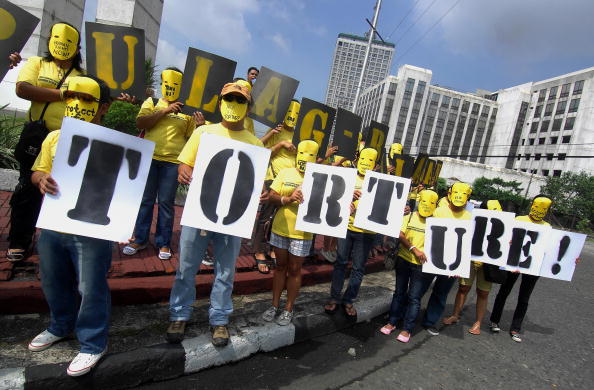
By Nerve Macaspac, Amnesty International USA Country Specialist for the Philippines
Torture is illegal in the Philippines. Yet Philippine police and military continue to use torture to extract information or force an admission of guilt from individuals they arrest for alleged crimes.
Alfreda Disbarro was punched in her stomach and face by a senior police officer in Manila. Her eyes were poked and her head banged against the wall. The police accused her of being a drug pusher. This happened in October 2013 – four years after the country’s Anti-Torture Act was passed.
In the Philippines, law enforcement agents continue to torture fellow citizens.
Torture is illegal in the Philippines. Yet Philippine police and military continue to use torture to extract information.
Amnesty International activists all over the world exposed the atrocities committed under the Marcos government. Amnesty International’s Stop Torture Campaign in the Philippines helps many survivors and families of victims tell their stories to the world and achieve justice.
Our fight, however, is far from over.
The Philippine government has ratified the Convention against Torture and Other Cruel, Inhuman or Degrading Treatment or Punishment. The Philippine Constitution also includes the right to be free from torture under article 3 of the Bill of Rights.
Despite this commitment to uphold human rights, in January 2014, Amnesty International reported on how Philippine police use a “wheel of torture.” Ten police officers have been relieved since then.

We can continue our Stop Torture Campaign in the Philippines. Here are three ways you can help:
- EMAIL THE PRESIDENT His Excellency Benigno Simeon Aquino III to demand that his government enforce the 2009 Anti-Torture Act and comply with international human rights law. Email address: [email protected]
- SIGN THE PETITION to investigate the torture of Alfreda Disbarro and take immediate administrative measures against police officers responsible for her torture.
- SEND A FACEBOOK MESSAGE to the Philippine Police Chief’s inbox to demand an end to the use of torture now.
Leila Chacko, Amnesty International USA Country Specialist for Japan, Viet Nam and the Pacific Islands contributed to this post.
